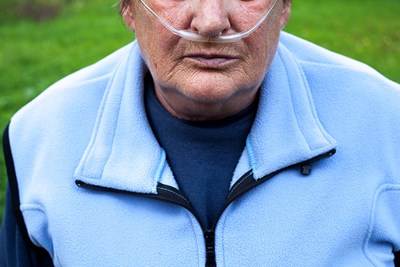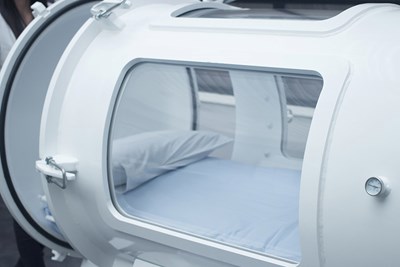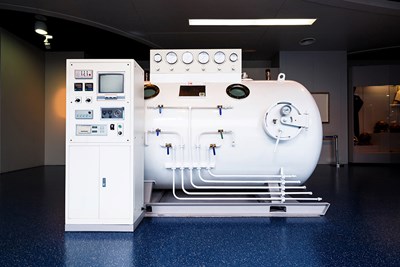Hyperbaric oxygen chambers provide patients with three times the normal amount of air pressure and four times the normal amount of oxygen. Some are designed like a tube, and hold only one patient at a time, while others are a small room designed to hold close to a dozen patients at once.
Used for many years to treat “the bends” (decompression sickness and air embolisms) in divers, researchers have found there are several other ailments to which hyperbaric chambers can lend a hand. However, despite its popularity and the fact that oxygen seems harmless, there are still several risks and complications you need to consider. Here is a look at the most common ones.
How does it work?
More than a dozen injuries and illnesses have been scientifically proven to improve as a result of hyperbaric oxygen therapy. The patient is put into the tube or room, where overwhelming amounts of oxygen rush into the blood. The blood, flooded with so much healing oxygen, encourages other chemicals that help with healing to join in. The regrowth of tissue and bone begins on a cellular level; even new blood vessels may form in the area, further encouraging healing.
What are the risks?
Although rare, it is possible for complications to arise from oxygen therapy from a hyperbaric chamber. It has been in use for more than 40 years, but research is still needed. Among the risks of such a treatment, the most common is a change in vision—a temporary myopia, or nearsightedness, may develop.
Very rarely seizures can occur; changes in air pressure can be a trigger for some people with epilepsy. The NIH states that “severe central nervous system symptoms occur in 1-2% of treated patients, symptomatic reversible barotrauma in 15-20%, pulmonary symptoms in 15-20%, and reversible optic symptoms in up to 20% of patients.”
The small space may be an issue for claustrophobic patients (and sometimes even patients who may not have realized claustrophobia). Headaches, nausea, and fatigue may follow treatment as well.
The change in air pressure may damage ears, the sinuses, and even the lungs. Other issues that may occur as a result of oxygen poisoning include psychological changes, pulmonary hemorrhage or toxicity, and even respiratory failure.
While many of the side effects of hyperbaric oxygen therapy are reversible, this is not always the case. Ultimately, it is important to discuss the benefits of this therapy for your condition compared to the risks that may arise from it. Those with a cold, lung diseases, or recent ear surgeries are not recommended to receive hyperbaric oxygen therapy.



